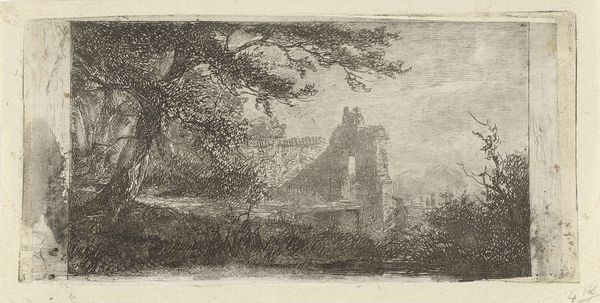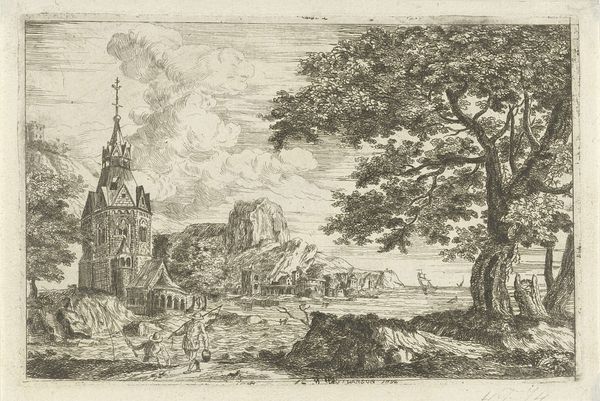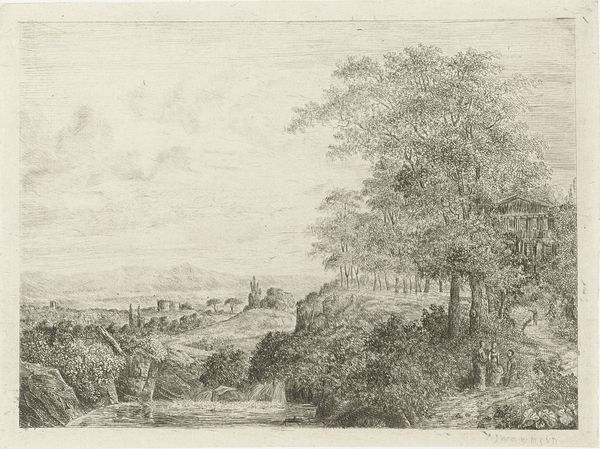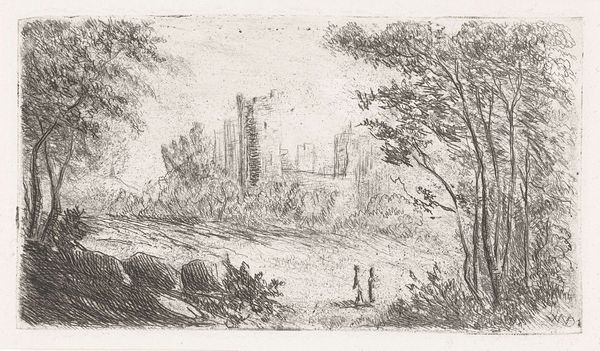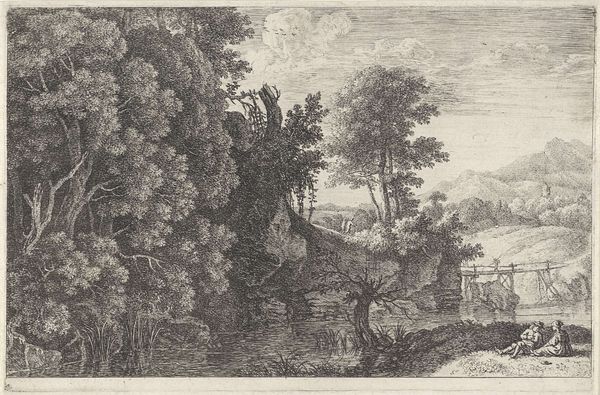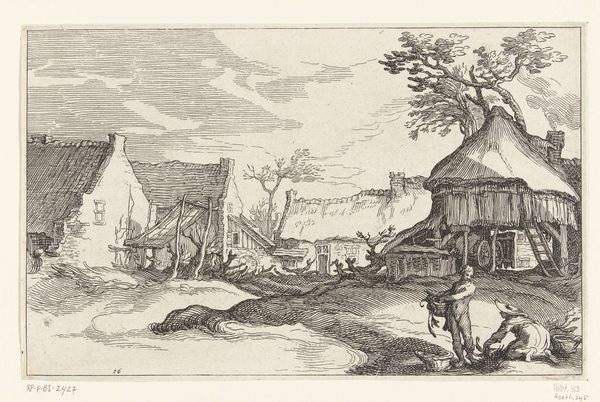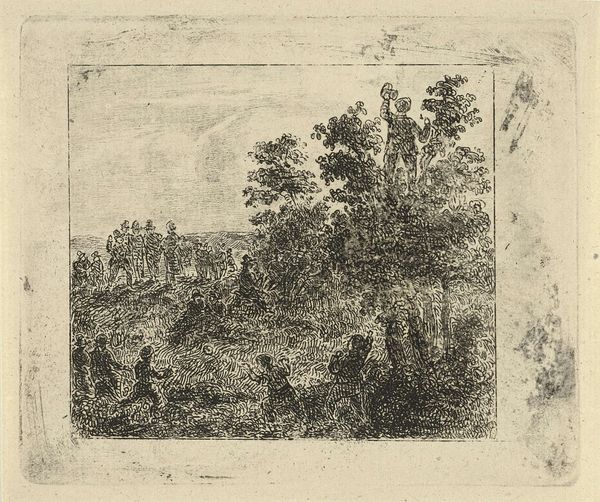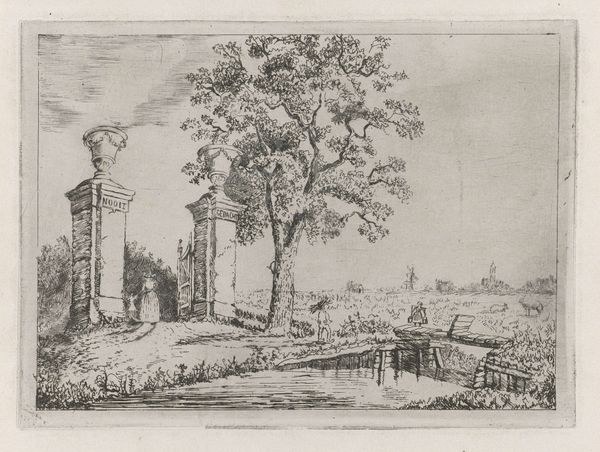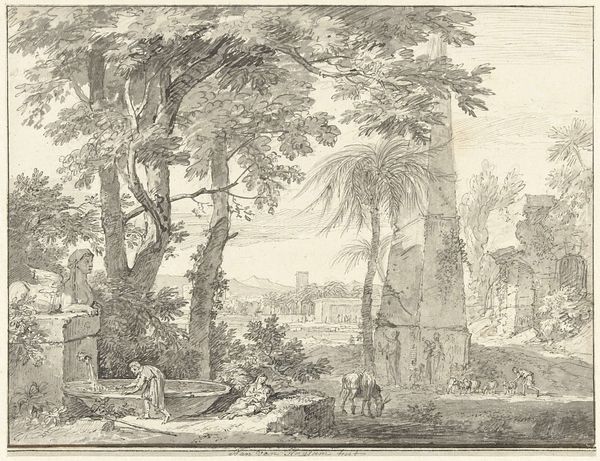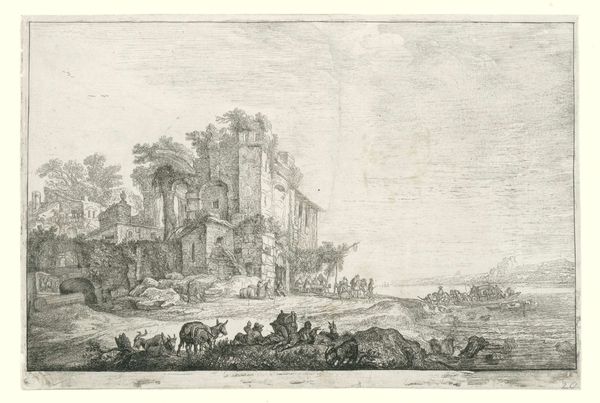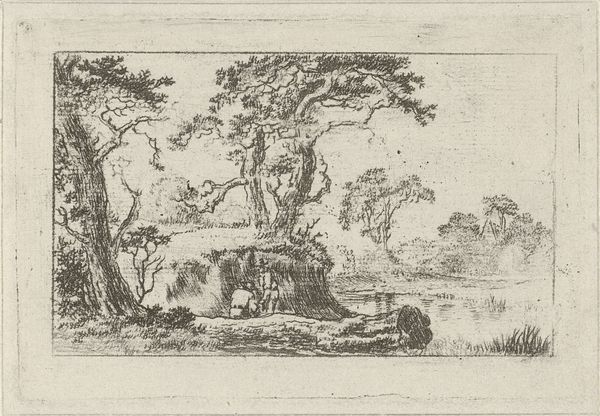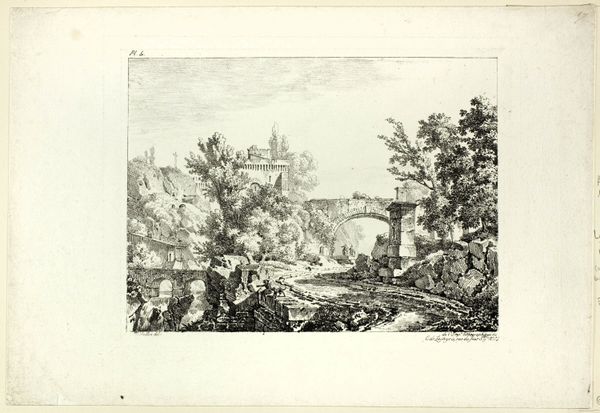
drawing, etching, ink
#
drawing
#
pen sketch
#
etching
#
pencil sketch
#
landscape
#
etching
#
ink
#
ink drawing experimentation
#
realism
Dimensions: height 71 mm, width 146 mm
Copyright: Rijks Museum: Open Domain
Curator: This is Jan Frederik van Deventer’s "Landschap met poortgebouw," or "Landscape with Gatehouse," dating sometime between 1832 and 1886. It’s rendered using ink in etching and drawing techniques. Editor: My first thought is melancholy. It's small, finely worked, and captures the quiet decay of nature reclaiming a man-made structure. I'm drawn to the texture, how would you describe the use of these materials in this landscape, Curator? Curator: The image immediately evokes the romanticism period. These ruins become potent symbols of temporality and mortality—a popular motif. The artist plays with shadow, using ink to its full potential to explore the balance between light and dark as allegory. Editor: Absolutely, and note how the method accentuates the crumbling quality of the structure. Etching, especially, requires careful application of acid to metal. This landscape feels both intentional and delicate, achieved through painstaking labor. Was Deventer particularly interested in the socio-economic standing related to creating such art pieces? Curator: While detailed biographical information remains scarce, the work does speak to a burgeoning appreciation for 'nature' as it truly exists – flaws and all. The gatehouse isn’t idealized but realistically rendered. This approach may also mirror anxieties relating to rapid industrialization at the time. Editor: Interesting. To me, this isn’t merely about reflecting nature; it’s about human interaction with the land. The etching and ink drawings involved labor, time, and specific tools accessible to certain people. Considering who had the access to materials is interesting when considering landscape art from this period. Curator: A fair point. Thinking about "access" helps us to understand the visual cues too. Observe how the archway acts as a symbolic threshold; perhaps between past and present, or nature and civilization, but we lack the access through it. Editor: Yes, it definitely opens more lines of thought about materiality and social issues! Curator: Indeed. It offers potent, visual evidence about artistic exploration.
Comments
No comments
Be the first to comment and join the conversation on the ultimate creative platform.

